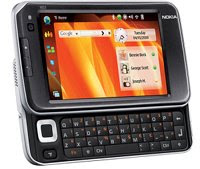GROUP INVESTS $3.5M IN ACCESS AT HOME RESIDENTIAL NETWORK
Coastweek - - AccessKenya Group, Kenya's first ICT company to publicly list and the leading corporate ISP today announced that it has invested $3.5 million to build out the largest WiMax network in Kenya with an initial deployment of 35 base stations.
This network will form the backbone of its Access@Home guaranteed high speed broadband residential service.
At the same time, AccessKenya has offered its existing corporate customers a special offer of completely free equipment and a 20 per cent discount on the price of the service.
An AccessKenya Group spokesperson explained:
"We have tested numerous different vendors including a number of WiMax equipment vendors over the last six months and selected Alvarion's WiMax solution as our preferred supplier and technology. "
Alvarion is the world's leading provider of WiMAX with an impressive track record in Africa that includes leading telcos such as Telecom Namibia, Telkom SA and MTN Uganda.
"We are initially deploying a total of 35 base stations in Nairobi and Mombasa, making our WiMax network the largest in Nairobi and Mombasa.
"The benefit of such a large network is that we will be able to provide guaranteed high speed services to almost all potential customers in the main residential areas of both Nairobi and Mombasa."
Group Managing Director Jonathan Somen commented:
"We are very excited about this new step in our Group's expansion strategy as this decision is the culmination of over one year of work to find the right solution for residential users.
"We really believe the new service will offer a quality of internet connection in the home that has simply not been available in Kenya until now." Added Somen.
"Following on from our special offer to our 30,000 shareholders, we are delighted to be able to offer the employees of all our corporate customers a ground breaking offer to use Access @ Home - completely free equipment and a 20 per cent discount on the retail price of the solution - a rate of 6,000 shillings per month.
"We now have approximately 2,200 corporate leased line customers and it is only right that these customers and their employees should benefit from the most generous of offers in recognition of their support of, and loyalty to, AccessKenya over the years.
"We will also be offering our customers the opportunity to have high speed reliable Virtual Private Network connections to access their offices from home." continued Somen.

